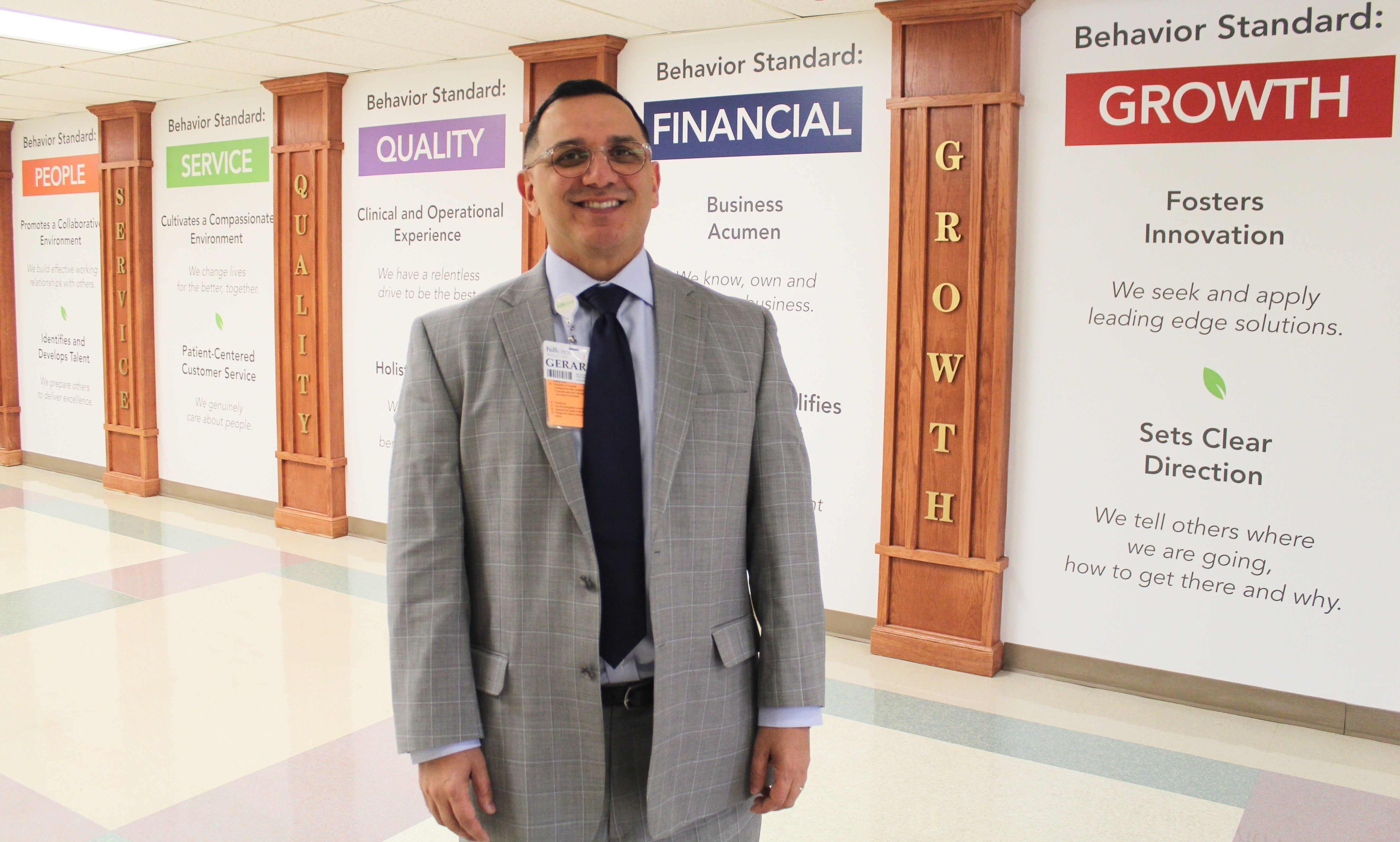
A first-time expectant mother arrives at triage at 25 weeks pregnant with signs of preterm labor. A grandfather arrives for his first day of cardiac rehabilitation exercise three weeks after suffering a heart attack. A two-time breast cancer survivor arrives for chemotherapy the day of her 45th wedding anniversary. Did anyone hold the door open? Did anyone ask if they needed help finding their way? Did anyone make eye contact and offer a warm greeting? “Patient experience is about all those encounters that are taking place while our patients and their families are here,” shares Hillcrest Medical Center Director of Patient Experience Gerardo De Leon. “We are all patient advocates. We all serve as care givers.”
In his first six months with Hillcrest Medical Center, Gerardo leads the Office of Patient Experience with the eyes, ears and intuition that come with more than 25 years in customer service roles, most recently in health care. He cites Wal-Mart and Ritz Carlton, as he implements Patient Experience daily line-ups amongst caregivers for elevating a winning attitude in customer service. “It means going above and beyond the customer’s needs or expectations,” he explains. “I like to borrow the methodology from Ritz-Carlton. They aim to meet and exceed expressed and unexpressed needs or expectations of a customer. It is core to our success here at Hillcrest that we understand it is really about service and an attitude of caring, while delivering exceptional care.”
The patient experience begins with empathy. “Patients are suffering,” Gerardo continues. “Their bodies are actually suffering and not working as they were intended to work. Research has found that 96 percent of patients have anxieties or fear about accessing health care. The top fears range from fear of infection to loneliness. They have come to a place they don’t know well and have to rely on countless faces and experts wearing scrubs. Everyone from valet to housekeeping staff and bedside nurses need to emotionally engage with our patients and visitors to aid in that healing process.”
Referring to the three patient encounters described above, is opening a door for a patient a polite gesture or in that action are we delivering care? “The delivery tactic – how we interact with patients - is key to the patient experience, outcomes and patient safety,” Gerardo says. “How we are reaching the patient and how we can elevate those processes or interactions, to help patients feel more comfortable here?”
As an example, Gerardo shares this story of a patient transporter, Alfonso Palafox, who noticed a woman who looked confused. “She was looking for the triage in the Women’s Health Center, but was lost and only spoke Spanish,” he says. “Alfonso stopped and asked her if she needed help. He walked with her from one end of the campus to the Women’s Health Center, stayed with her and communicated with her for the staff. He was present and engaged with someone who needed help. He took time to really serve and make a difference.”
Every encounter with every patient every day can change lives. The patient experience precedes, exists alongside and remains after clinical patient care is delivered. “I see that happening with our staff here at Hillcrest Medical Center,” adds Gerardo. “They come to work and they want to provide superior service. They come with a level of engagement, motivation, enthusiasm and passion to make a difference.”
